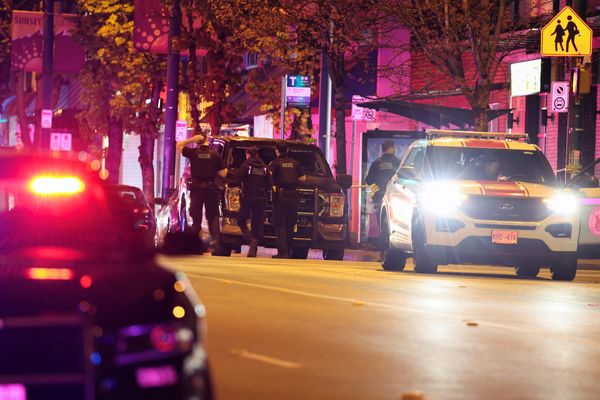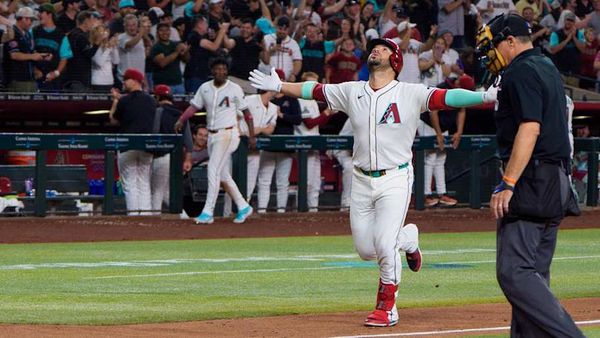
We’ve been here before, of course. Multiple times in fact. Talks of reviving the A1GP ‘World Cup of Motorsport’ since its demise in 2009 have invariably led to nothing down the years, the closest thing to a resurrection coming in the form of the even more short-lived Formula Acceleration 1 series won by Dutchman Nigel Melker in 2014. It’s fair to say that championship, which used the original Lola-built A1GP cars and unashamedly copied its concept of racing under national flags, never mustered comparable enthusiasm to the original that began in 2005.
This counted on the support of world champions John Surtees, Emerson Fittipaldi and Alan Jones who were each involved in the operation and/or management of their respective national teams, and brought through numerous up-and-coming talents during its four-year run. A1GP’s adoption of a new Ferrari-powered chassis and the resulting increase in cost which coincided with the global financial crisis hitting in 2008-09 was a significant contributing factor in its demise, but the mooted reboot for high-powered single-seaters is thought to have to the best prospects yet for success.
Former Alpine and FIA man Marcin Budkowski has been hired by former Olympics figure Sir Keith Mills’ Origin Sports Group, which has bought the rights to A1GP and its affiliated trademarks. Budkowski, speaking to Autosport last month, said, “It's not a revival of the A1GP championship, it's a new championship, but using the same concept”.
Should its plans come to fruition, with funding still being sought, a new generation of fans will get their glimpse at a championship held in high regard by those who were part of it almost 15 years ago.
“I would love to see it be revived,” said Oliver Jarvis, twice a winner for Team Great Britain. “If you speak to anybody that actually drove in it, we had the best time ever. The racing was fantastic, a lot of very good drivers came through, and it helped to progress their careers. Overall, it was a great concept and a lot of fun.”
“It was amazing, it was a really nice championship,” agrees A1GP’s most capped driver, Switzerland’s 2007-08 champion Neel Jani. “A lot of people still have an A1GP nostalgia and I don’t know any other championship where people have that.
“Most people actually lost some money in the end there, and they still have that feeling it was a great time. I think it’s hard to create such a memory.”

A1GP wasn’t only popular with drivers and teams. For Adam Carroll, who remains A1GP’s most recent champion for Team Ireland in the only powered-by-Ferrari season, its enormous following made A1GP special to be part of.
“Everywhere we went, I was always blown away by the crowds and how many people actually showed up to watch it,” he says. “Being involved in things like GP2 and stuff like that, when you had a standalone event, there was no one there really. The tracks were full, people were excited to come and watch A1GP and everybody enjoyed it. That’s a rare thing now in motorsport.”
“It was super big in South Africa, Indonesia, people knew us at passport control!” remembers Jani. “I still remember entering the country, they were like ‘ah, Team Switzerland’.
“I was in Jakarta last year for Formula E and people still came [to tell me] about A1GP. ‘I remember you from A1GP’, so many. And young ones who were kids, 10-year-olds [back then]. It shows you that it had an impact in these countries because they had their own national team.”
"Everywhere we went, I was always blown away by the crowds and how many people actually showed up to watch it" Adam Carroll
Carroll believes the decision to base the series on national flags had an appealing simplicity that gave it a crossover appeal “from fans that maybe might not look at motorsport just as closely”.
“A lot of things are becoming so difficult to follow. We all like convenience don’t we?” he says. “We like things to be self-explanatory and something you can pick up easily.”
Filipe Albuquerque, a race winner for Portugal, adds: “I remember very well back then that people connected just simply because it’s the country. It makes sense. I enjoyed it a lot going to different countries, representing your country.”

The eclectic blend of circuits that A1GP visited was a core appeal too. Jarvis cites the Durban street track in South Africa as a pick among “some really awesome tracks”, while the infamous Beijing hairpin was at the other end of the scale but achieved a status of notoriety.
“They had to re-design the track so we could go in the pit entry and swing out,” he remembers. “It was too tight, the car didn’t have enough steering lock!”
“You don’t need to go to the usual calendar,” reckons Albuquerque, now team-mates with Jarvis in the World Endurance Championship at the United Autosport LMP2 squad. “Back then, we were going to Kyalami when nobody was going. We were going to Taupo! Why not? Just let’s go for those circuits and that’s how cool it was.”
Another unique aspect of A1GP was its driver makeup, a real melting pot of inexperienced up-and-comers and veterans who didn’t view it as being beneath them. Buddy Rice, who appeared for the first two rounds of the 2007-08 season, had won the 2004 Indianapolis 500, while six drivers that featured in A1GP’s first season had previously raced in Formula 1 – among them veterans Jos Verstappen and Christian Fittipaldi. Going toe-to-toe with them made for a fantastic opportunity for young drivers to boost their profile.
“It was very popular back then,” says Albuquerque. “And because I was driving in the front, I think it helped [with lifting profile] as well. It was obviously good for me and I had massive fun.”
Jarvis started out as a rookie alongside experienced F1 tester and former Ganassi Indycar driver Darren Manning, two drivers who would otherwise have likely never crossed paths.
“Our careers were at completely different stages,” he says. “[A1GP] gave me racing experience in powerful cars, longer races – I came from Formula Renault at the time, a little bit of Formula 3, and these were big, heavy cars. There were some big names that came in and some of them struggled quite honestly, it wasn’t an easy formula.”

Perhaps the most high-profile A1GP graduate is current Haas F1 driver Nico Hulkenberg. Team Germany’s 2006-07 champion also derived huge benefits from his first experience of a “much more international” series driving a “much bigger car, much more power” having previously only raced in his domestic F3 championship and in Formula BMW.
“It was great fun, whenever you're successful you enjoy those,” he says. “But for me that was the start of an international career or travel as well, the first time to travel abroad, first time in different continents, it was very exciting times.”
Those in a similar boat to Hulkenberg who were closer to the start of their careers, as well as broadening their horizons, also significantly expanded their contact books by interacting with professional teams and engineers from different categories.
"It was one of the most fabulous and exciting phases of my life, of my career, but it is going to be unbelievably difficult to revive that" Max Welti
“You got to meet new teams and engineers, and they’re people that I still see around the paddock today,” says Jarvis. “I met people like Leena Gade through A1 and her sister Teena Geede; Leena I’ve since worked with as a race engineer, Teena has gone on to work in F1. James Robinson was an engineer for Team GB [and latterly for Switzerland]; he’d worked with Williams and then went on to work for Rebellion. So many people, even down to the PR people, a lot of them I see today following F1 drivers around started in A1GP.”
Can the rebooted A1GP recapture everything that made the original so popular? Team Switzerland seatholder Max Welti is cautious.
“It was one of the most fabulous and exciting phases of my life, of my career, but it is going to be unbelievably difficult to revive that,” he says. “When it happened, it happened at the right time with maybe the right people.
“This whole Olympic spirit in it, to bring it into motorsport, it was awesome. But to revive that many years later, close to 15 years later is going to be very difficult, extremely expensive. From an announcement to really make it happen, that’s a long way to go.”

Jani agrees that the original benefitted from good timing since, “at that time, there were not so many championships around; after it was a lot of new championships coming”. Plainly, the landscape now is very different now, with a new swathe of sustainability challenges to consider. This is a point Budkowski has acknowledged, stating the mooted series’ commitment to running 100% sustainable fuels from the off. That alone suggests it is unlikely to go fully electric, a point Jani believes wouldn’t make much sense.
“You need to find your niche nowadays,” says Jani, stressing he’s keen to see it “keep the special cars” from the first iteration, because “it’s all based on exciting racing in the end”.
“Maybe they can tie it to this FIA [Motorsport] Games. I don’t think you just need to create a series as another race series.”
But Carroll believes such a series is needed, even if it’s not possible for the new A1GP to retain the original’s rugged charm in the ultra-sophisticated modern era where vehicles like the Lola-Zytek – which Carroll calls “a beast of a car” – are very much outliers. Budkowski is targeting 20 countries with two drivers each, which would give lots of opportunities to impress.
“You need platforms like that because there’s way more talent out there than there are seats,” the Northern Irishman says. “There is space out there for talent. The guys who are capable of F1, or maybe are just a bit too raw for F1 but have the speed and the talent, they need a platform that they can go and showcase it. I think that’s where A1GP was just so good.
“I think there’s still room for something that’s relatively still simple and just down to a really good, fast car and really good drivers that can race closely and create great entertainment for everybody to watch. To bring an element of that back would be amazing in this day and age.
“Yes, it will still have to fit in somewhere with the times. But I think as long as it’s not overcomplicated, it can basically pick up and carry on from where A1 finished.”
Additional reporting by Jamie Klein and Filip Cleeren








